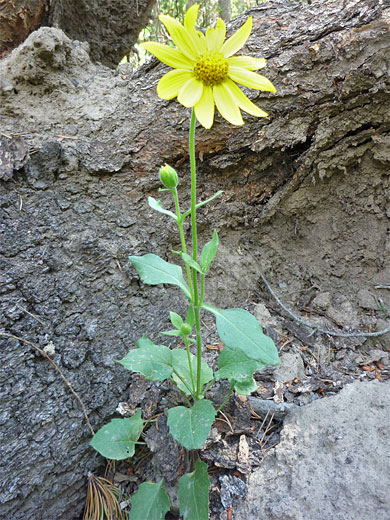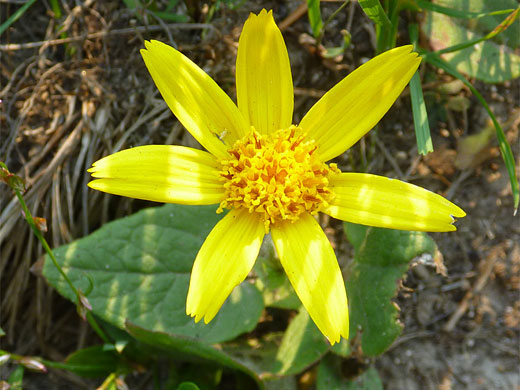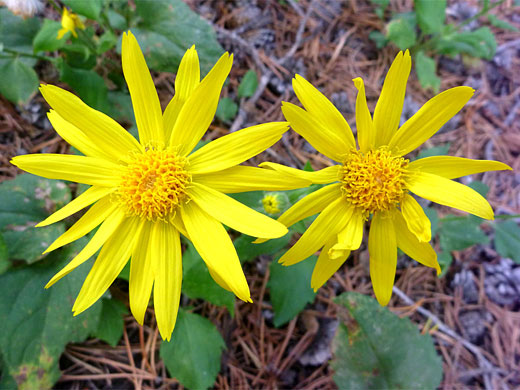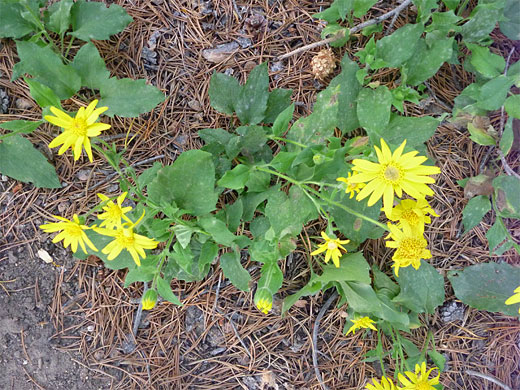Common name:
Heartleaf arnica
Family:
Scientific name:
Arnica cordifolia
Main flower color:
Range:
Some areas of all the Western states between the Rocky Mountains and the Pacific Ocean; not found in the far south
Height:
Up to 2 feet
Habitat:
Open hillsides, light woodland
Leaves:
Opposite, cordate (heart-shaped), up to 4 inches long and nearly as wide. Shallowly toothed margins
Season:
June to August
As the common name (heartleaf arnica) suggests, the leaves provide one way to distinguish arnica cordifolia from similar species, being broadly heart-shaped, coarsely-toothed and growing mostly around the base, where they persist during flowering - basal leaves of some similar arnica species are withered by this time. Leaves higher up the stem are smaller and more ovate. Leaf shape is somewhat variable, however.
Stems are hairy, especially towards the tip, as are the involucres below each flower head; these terminate in a single ring of thin, pointed green phyllaries (10 to 20). Flowers have between 9 and 16 disc florets, toothed at the apex, and numerous ray florets. Pappus bristles are white, and lined by tiny barbs. Plants grow quite tall in the open but in wooded locations are more likely to stay close to the ground, forming large colonies. They spread from the root system rather than by pollination.
Stems are hairy, especially towards the tip, as are the involucres below each flower head; these terminate in a single ring of thin, pointed green phyllaries (10 to 20). Flowers have between 9 and 16 disc florets, toothed at the apex, and numerous ray florets. Pappus bristles are white, and lined by tiny barbs. Plants grow quite tall in the open but in wooded locations are more likely to stay close to the ground, forming large colonies. They spread from the root system rather than by pollination.
All Contents © Copyright The American Southwest | Comments and Questions | Contribute | Site Map










